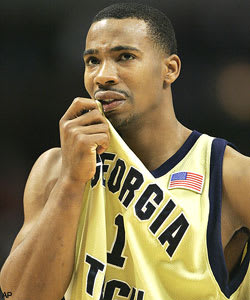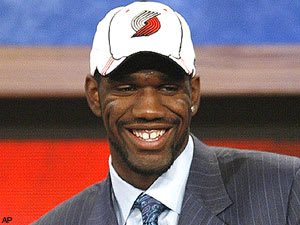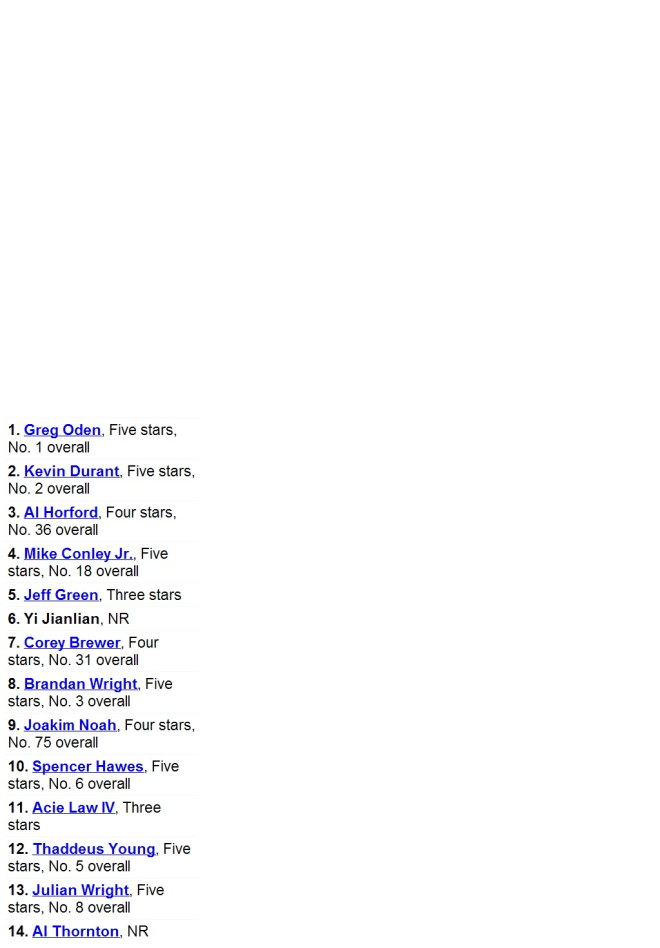Talent from 2006 class dominates draft night


Advertisement

• Pick-by-pickClick NBA DRAFT COVERAGEHere to view this Link.
More
The graduating high school class of 2006 ruled the 2007 NBA Draft on Thursday night.
Eight of the top 21 picks spent a year in college before hearing their names called by David Stern. We may never see a class quite like this one again.
Six of the top seven players in the final Rivals.com class of 2006 entered the draft, and all six were selected in the first 19 picks.
Greg Oden, the consensus No. 1 player in the country out of Lawrence North High School in Indianapolis, was selected first by the Portland Trailblazers. Kevin Durant, the nation's second best player out of Montrose Christian (Md.), was selected second in the draft by the Seattle Supersonics.
Rivals.com's No. 3 player in the class of 2006, Brandan Wright, was chosen with the eighth pick by the Charlotte Bobcats. Wright was later traded to the Golden State Warriors.
Where they were ranked

Here is a look at where the NBA lottery picks were ranked in high school by Rivals.com.

Washington native Spencer Hawes, the No. 6 ranked player out of high school, was taken by the Sacramento Kings with the 10th pick. Two picks later, Thaddeus Young, the No. 5 player our 2006 rankings, was selected by the Philadelphia 76ers.
Young's Georgia Tech teammate, point guard Javaris Crittenton, went 19th to the Los Angeles Lakers. Crittenton was the No. 7 ranked player in the 2006 class according to Rivals.com.
Chase Budinger (No. 4) was the only one of our top seven players in the 2006 class to stay in school. Now a sophomore at Arizona, Budinger averaged 15.6 points and 5.8 rebounds a game as a freshman.
Rivals.com National Basketball Analyst Jerry Meyer said the way the class played out in the draft didn't surprise him at all.
"The 2006 class was a good, deep class and especially heavy at the top," Meyer said. "It was clear to us that Oden, Durant and Wright were the top three players, and that scenario played out on draft night," Meyer said.
"After those three guys, it was more difficult. Crittenton, our No. 1 point guard, and Hawes - our No. 2 center - going in the first round didn't surprise us. We also had Mike Conley, Jr. ranked higher than anyone coming out of high school.
"There are a good number of 2006 prospects who stayed for another year and will be high picks in next year's draft."
Daequan Cook, the other early entry from the class of 2006, was drafted at No. 21 by the Philadelphia 76ers and was later traded to Miami. Cook was the No. 13 ranked player in the class of 2006 by Rivals.com.
A number of these players would have likely turned pro out of high school had the NBA not passed a rule that required players to spend a minimum of one year in college. Ohio State and Georgia Tech were affected most by the rule. The Buckeyes had three freshmen selected in the first round, and the Yellow Jackets had two.
The NCAA Tournament is a little different than the ABCD or Nike All-American camp in terms of seeing the best of the best against the best of the best. Pro scouts and general managers had another year to evaluate players at a higher level.
Georgia Tech head coach Paul Hewitt said the benefits of the rule will be felt over time. He said the feedback from the professional ranks was positive.
"The rule benefits the NBA more than it benefits college basketball and even the kids because it gives the scouts and general managers another year of data," Hewitt said. "They'll play against bigger, stronger players and be coached by much better coaches. You can see how they handle high pressure situations with the stands full, things like that. I think they were able to get a better gauge on how well these kids respond."
Meyer said he sees the positives for all parties involved.
"In terms of creating a buzz around the draft, the one-year rule has been a success for the NBA. Instead of high school players - who the average fan is not that familiar with - going to the league to be developed, now players who fans are familiar with are entering the league with a much better chance of making an immediate impact," Meyer said. "I think the rule has served the NBA, the college game and the players well."
Crittenton said the rule helped him prepare his game and ready himself for the NBA ranks.
"It was an important rule," Crittenton said. "I learned a lot under a great coaching staff and learned a lot at a school that has done well with point guards like Stephon Marbury, Mark Price, Jarrett Jack and Kenny Anderson. It was a blessing that I spent a year there to learn. It helped me a lot."
The rule apparently helped all eight of the class of 2006 prospects that left school early, because they were all first-round selections.
[rl]